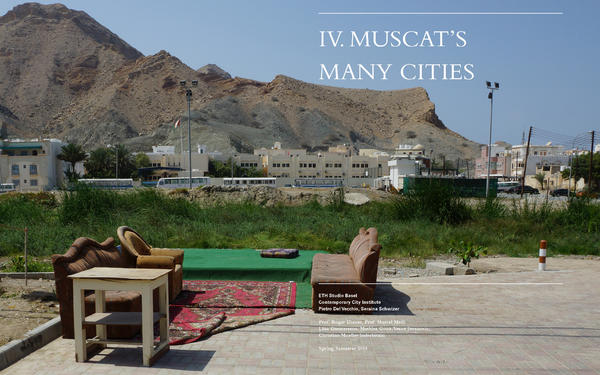Muscat's Many Cities - Form, Structure, Life

Pietro Del Vecchio, Seraina Schwizer
The siting of Muscat was based on the geographic advantage provided by the natural cornice around which the old Port City was founded, Muttrah. Up until the 1970s, Muscat itself was centered around its port, and had grown gradually into the natural crevices afforded by its steep and hilly surrounding topography. The old districts Muttrah (where the commercial port is still located, along with the old souq and a somewhat run down traditional district behind this water front), Ruwi (now containing what could be dubbed the CBD area of Muscat), Darsayt (nowadays a ‘workers’ district that occupies a narrow valley that unravels north towards the coastline) and Qurm (containing lots of upper end residences and some hotels, along the coast), have all grown organically along the topographical lines southwards and westwards from the old Port Cornice. To this day this is undoubtedly the most densely organized set of neighborhoods in the city, and their development due to the strong natural elements is different from the development happening on the Plains of Muscat, where most of the city expanded to, and where other ordering logics prevail. At the same time different societies within the city seem to establish their on centralities and cities.

